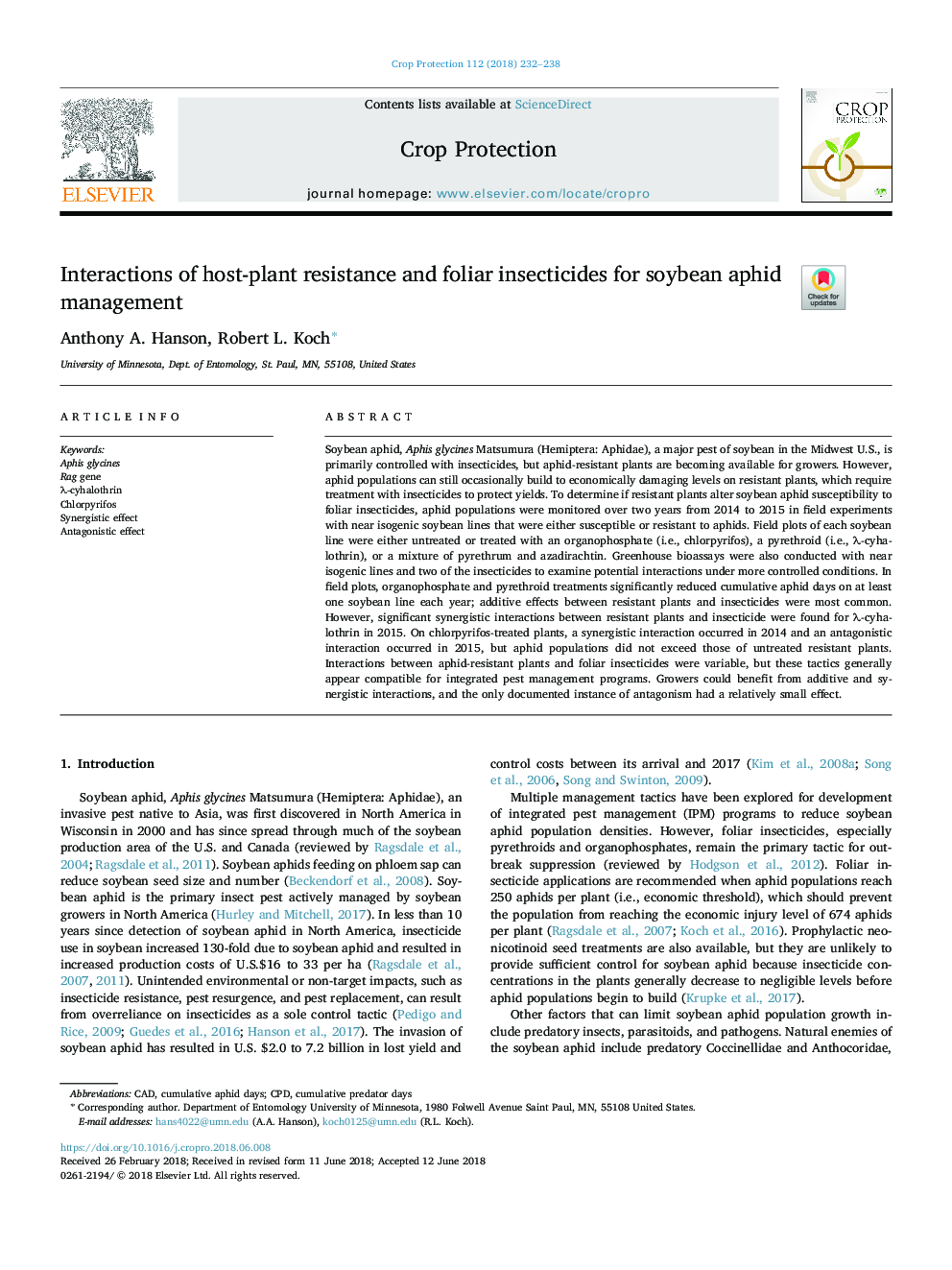| کد مقاله | کد نشریه | سال انتشار | مقاله انگلیسی | نسخه تمام متن |
|---|---|---|---|---|
| 8877971 | 1624275 | 2018 | 7 صفحه PDF | دانلود رایگان |
عنوان انگلیسی مقاله ISI
Interactions of host-plant resistance and foliar insecticides for soybean aphid management
ترجمه فارسی عنوان
تعامل مقاومت گیاه میزبان و حشره کش های برگ در مدیریت شته
دانلود مقاله + سفارش ترجمه
دانلود مقاله ISI انگلیسی
رایگان برای ایرانیان
کلمات کلیدی
موضوعات مرتبط
علوم زیستی و بیوفناوری
علوم کشاورزی و بیولوژیک
علوم زراعت و اصلاح نباتات
چکیده انگلیسی
Soybean aphid, Aphis glycines Matsumura (Hemiptera: Aphidae), a major pest of soybean in the Midwest U.S., is primarily controlled with insecticides, but aphid-resistant plants are becoming available for growers. However, aphid populations can still occasionally build to economically damaging levels on resistant plants, which require treatment with insecticides to protect yields. To determine if resistant plants alter soybean aphid susceptibility to foliar insecticides, aphid populations were monitored over two years from 2014 to 2015 in field experiments with near isogenic soybean lines that were either susceptible or resistant to aphids. Field plots of each soybean line were either untreated or treated with an organophosphate (i.e., chlorpyrifos), a pyrethroid (i.e., λ-cyhalothrin), or a mixture of pyrethrum and azadirachtin. Greenhouse bioassays were also conducted with near isogenic lines and two of the insecticides to examine potential interactions under more controlled conditions. In field plots, organophosphate and pyrethroid treatments significantly reduced cumulative aphid days on at least one soybean line each year; additive effects between resistant plants and insecticides were most common. However, significant synergistic interactions between resistant plants and insecticide were found for λ-cyhalothrin in 2015. On chlorpyrifos-treated plants, a synergistic interaction occurred in 2014 and an antagonistic interaction occurred in 2015, but aphid populations did not exceed those of untreated resistant plants. Interactions between aphid-resistant plants and foliar insecticides were variable, but these tactics generally appear compatible for integrated pest management programs. Growers could benefit from additive and synergistic interactions, and the only documented instance of antagonism had a relatively small effect.
ناشر
Database: Elsevier - ScienceDirect (ساینس دایرکت)
Journal: Crop Protection - Volume 112, October 2018, Pages 232-238
Journal: Crop Protection - Volume 112, October 2018, Pages 232-238
نویسندگان
Anthony A. Hanson, Robert L. Koch,
